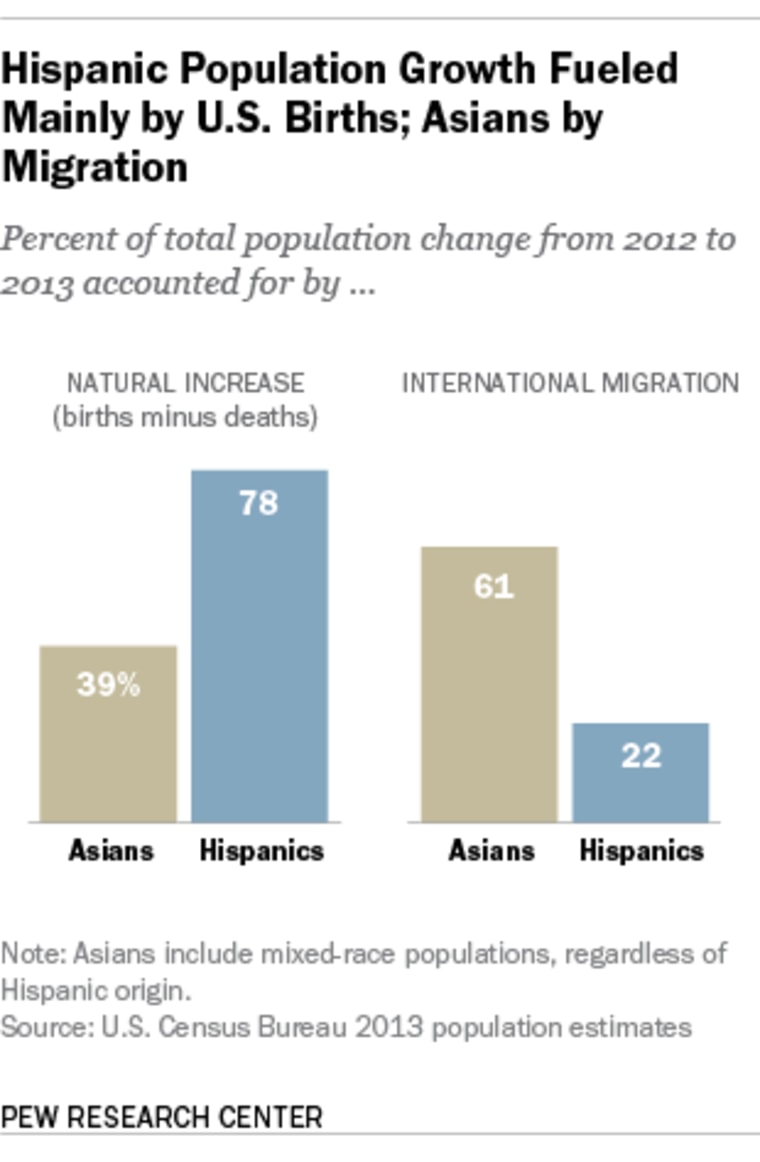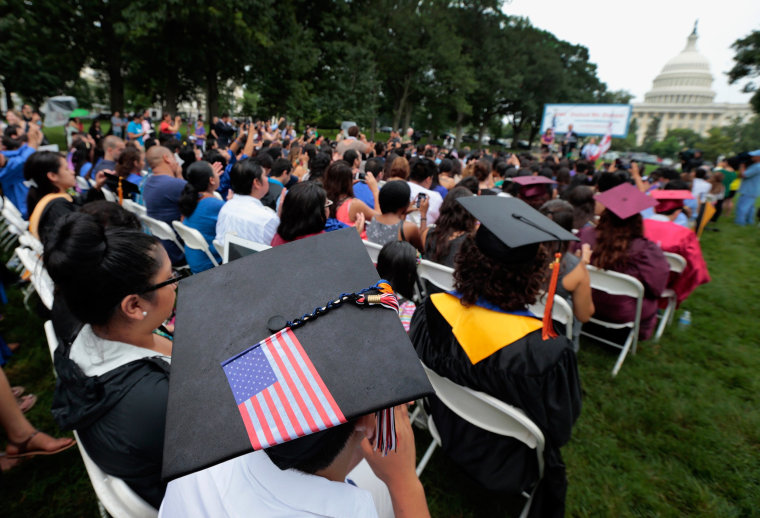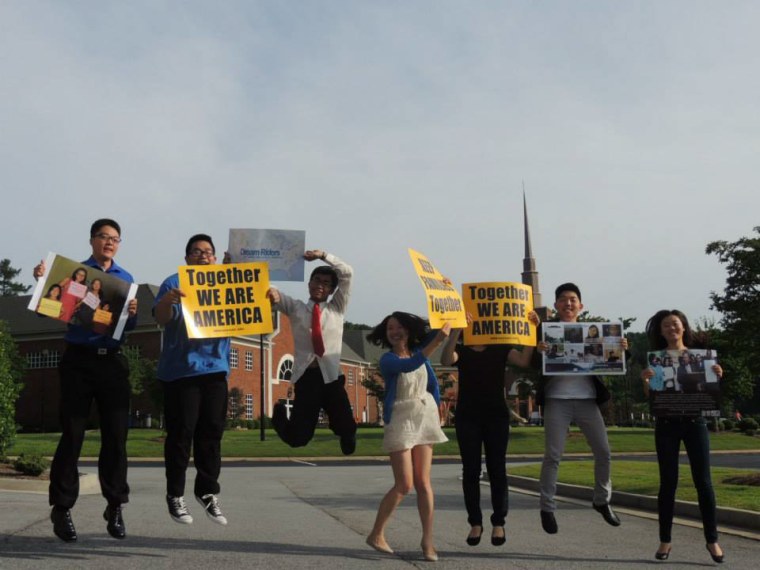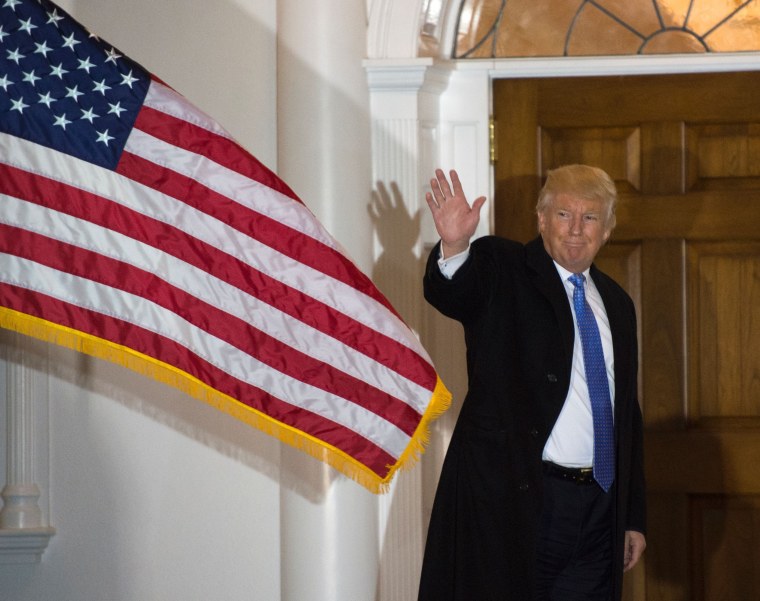Coming off a victory that stunned many in the United States and across the world, President-elect Donald J. Trump has begun to announce key appointments to his administration. As positions are filled, Asian Americans and Pacific Islanders (AAPI) are left to wonder how much of Trump’s campaign rhetoric will translate into actual policy.
Trump’s “Contract with the American Voter” details the measures his administration plans to pursue in his first 100 days in office. From immigration to canceling executive actions, from healthcare to nominating a Supreme Court justice, the president-elect’s agenda touches on many issues of importance to the AAPI community.
What follows are some of what Trump has outlined in that contract and the effects that changes to existing policy could have on AAPIs.
Immigration

Immigration reform remains a source of deep concern for many AAPIs. As of 2015, approximately 21 million Asian Americans, Pacific Islanders, and Native Hawaiians called the U.S. home, according to the Census Bureau. The fastest growing racial group in the country, Asians accounted for 5.6 percent of the U.S. population, according to the 2010 Census.
What’s more, nearly two in three were born outside the country, according to a 2014 report from the Center for American Progress.
In his “Contract with the American Voter,” Trump has vowed to enact new policies that will directly impact immigration. They include:
RELATED: Asians Remain Fastest-Growing US Group as Pacific Islanders, Mixed-Race Numbers Grow: Census
- Canceling “every unconstitutional executive action, memorandum and order issued by President Obama.”
- Beginning to remove “the more than two million criminal illegal immigrants from the country and cancel visas to foreign countries that won’t take them back.”
- Suspending “immigration from terror-prone regions where vetting cannot safely occur. All vetting of people coming into our country will be considered ‘extreme vetting.’”
- Canceling “all federal funding to sanctuary cities.”
Muslim Ban
During the campaign season, one of the more controversial proposals floated by Trump was his ban on Muslims entering the country.
In December, Trump first called for “a total and complete shutdown of Muslims” coming to the U.S. Later describing the ban as temporary, Trump told "60 Minutes" in July that people from suspicious "territories" would receive "a thing called 'extreme vetting.'" He did not describe how extreme vetting would differ from the current vetting process.
The government already has a rigorous nine-step vetting framework in place for refugees. In the past, Trump has included all Syrian refugees, including children and non-Muslims, in the ban.
The language in Trump’s “Contract with the American Voter” calls for suspending “immigration from terror-prone regions where vetting cannot safely occur. All vetting of people coming into our country will be considered ‘extreme vetting.’”
In August, NBC News surveyed more than 20 security and immigration officials, who said a religious ban would be virtually impossible to carry out and would cripple the immigration system. Leaders in both parties have also called the ban discriminatory and probably unconstitutional.
Robert McCaw, director of the government affairs department at the Council on American-Islamic Relations (CAIR), a nonprofit, told NBC News that the ban represents a devastating blow to keeping family ties and cultural connections together.
“With such uncertainty about Trump’s proposed Muslim ban or extreme vetting program, many in the Muslim community are wondering whether as U.S. citizens they will have difficulty re-entering the country after traveling abroad, family members from overseas will be able to visit, or parents are able to immigrate [to] the U.S. when they are older and in need of care or medical treatment,” he said in an email.
RELATED: Experts Say Trump's Muslim Ban Would Cripple Immigration System
Trump’s Muslim ban gained traction with some voters following mass shootings in the U.S., in which the suspects had reported ties to terrorism or ISIS. But an NBC News/Wall Street Journal poll in June found that 49 percent of voters said they opposed a temporary ban on Muslims entering the U.S.
For Asian Americans, that percentage was even higher, with 62 percent of registered voters against it, the Fall 2016 National Asian American Survey found.
Some civil rights groups have also voiced concern over Trump’s appointment of Steve Bannon as chief strategist and senior counselor to the president, earlier this month. The former president of Breitbart News and more recently chief executive of Trump's campaign, Bannon oversaw Breitbart as it drew criticism for its close ties to the “alt right,” an online-based counterculture movement associated with white nationalism.
According to Pew Research, 3.3 million Muslims lived in the U.S. in 2015, making up about one percent of the country’s total population. That number, Pew estimates, will double by 2050. Immigration accounted for slightly over half of the projected growth of the Muslim-American population between 2010 and 2015, Pew reported. Muslims make up about 10 percent of all legal immigrants who arrive in the U.S., “and a significantly smaller percentage of unauthorized immigrants,” according to Pew.
Deferred Action for Children
When Trump talks about canceling “every unconstitutional executive action, memorandum and order issued by President Obama,” some AAPI immigration advocates worry that the Deferred Action for Childhood Arrivals (DACA) program will be among those axed. Signed as an executive action by President Obama in 2012, DACA temporarily removes the threat of deportation for undocumented immigrant children and also grants them authorization to work.

DACA requirements include being under the age of 31 as of 2012, coming to the U.S. before the age of 16, and living continuously in the country since 2007.
"It's sometimes lost in the debate that 1.5 million undocumented people — 14 percent of the undocumented population in the U.S. — are from Asian countries," Christopher Kang, national director of the National Council of Asian Pacific Americans (NCAPA), told NBC News back in April.
But the DACA program has not had the same success with Asians as it has with Hispanics, federal immigration statistics show.
While nearly four in five eligible Mexicans and Central Americans have applied for DACA, less than 20 percent of Asians have done the same, Reuters reported in June.
“Because of DACA, hundreds of thousands of undocumented people — including many Asian Americans — have been able to come out of the shadows, pursue their education and gain work opportunities.”
Reluctance stems, in part, from embarrassment about being undocumented, as well as a fear that revealing one’s illegal status will lead to deportation, immigrant rights groups say.
Advocates of DACA argue that deferred action increases economic opportunities for recipients who have grown up in the U.S., allowing them to earn higher wages and contribute to the country’s economic growth. Critics, however, charge that Obama overstepped his constitutional authority by changing immigration policy through an executive action.
“Because of DACA, hundreds of thousands of undocumented people — including many Asian Americans — have been able to come out of the shadows, pursue their education and gain work opportunities,” Kang told NBC News in an email Monday. “Repealing this progress would be detrimental to the future of our country and undermine our values and ideals.”
Deferred Action for Parents and Expanded DACA
Also left in limbo is another executive action on immigration that Obama had hoped to enact. Announced in 2014, Deferred Action for Parents of Americans and Lawful Permanent Residents (DAPA) and expanded DACA stood to impact at least four million undocumented immigrants, many of them parents of children who are legally in the U.S.
Those given DAPA status, renewable every three years, would no longer face deportation and would be allowed to temporarily remain in the U.S. to legally work and access public benefits.
Expanded DACA would have lifted the age limit on eligibility, so long as applicants arrived before turning 16. The current program requires candidates to be under the age of 31 as of 2012.
Some 475,000 undocumented Asian Americans would be eligible to apply for either DAPA or the expanded DACA, according to the Pew Research Center.

But a 4-4 Supreme Court split in June put the brakes on Obama carrying out DAPA and expanded DACA. While the Supreme Court in U.S. v. Texas did not strike down his executive action, the government has been unable to enforce the policies as the case winds its way through the lower courts.
Similar to the critics of DACA, opponents of DAPA — including the 26 states that sued the federal government — argue that the president exceeded his authority by carrying out immigration reform by executive action.
RELATED: Asian-American Leaders Vow Continued Work After SCOTUS Immigration Decision
At the time, Republican National Committee chairman Reince Priebus welcomed the ruling. Priebus was tapped just this past weekend to serve as Trump’s White House chief of staff.
"The Supreme Court has stopped an approach President Obama himself acknowledged twenty-two times he did not have the authority to implement, and has reaffirmed that only Congress has the power to make laws," Priebus said in June.
Obamacare
In his first 100 days in office, Trump said he vows to work with Congress to repeal the Patient Protection and Affordable Care Act (ACA), often called Obamacare, and replace it with health savings accounts.
Signed into law in 2010, the ACA sought to end what were considered insurance company abuses in the healthcare system, including dropping people when their medical conditions became too expensive to cover, or not paying for pre-existing conditions.
It also sought to shrink the percentage of uninsured, a goal the ACA appears to have accomplished, according to data from the National Center for Health Statistics (NCHS).
For adults between the ages of 18 and 64, the number of uninsured dropped from 22.3 percent in 2010 to 12.8 percent in 2015, the figures show.
Asian Americans of the same age group also saw a decrease in those who were uninsured, from about 20 percent to 7.9 percent during the same time period, according to NCHS.
“Our communities have seen the greatest decrease in our uninsured rate (by 59 percent) under the ACA, the largest of any racial group nationally.”
“Our communities have seen the greatest decrease in our uninsured rate (by 59 percent) under the ACA, the largest of any racial group nationally,” Doreena Wong, director of Asian Americans Advancing Justice-LA's health access program, told NBC News in an email. “And consistently, Asian Americans and Pacific Islanders have expressed significant support for the ACA, even across party lines.”
Trump, however, argues that the ACA “has not been a success,” according to his transition team website. He said it has resulted “in rapidly rising premiums and deductibles, narrow networks, and health insurance.”
In his “Contract with the American Voter,” Trump also said his plan will let people purchase health insurance across state lines, a move he said that will encourage competition and reduce costs. It will also allow states to manage Medicaid funds.
Even with a Republican Congress, it remains unclear whether a repeal of the ACA will fully come to fruition. Trump himself has since dialed back, telling the Wall Street Journal he’d consider keeping two of Obamacare’s most popular provisions. One allows adult children to remain on their parents' health insurance plans, and the other prevents insurance companies from refusing to cover "pre-existing conditions."
Appointing a Supreme Court Justice
Trump has also said that from his first day in office, he will start the process of replacing Justice Antonin Scalia, who unexpectedly died in February at the age of 79.
RELATED: Editorial: The Nomination of an Asian American to the Supreme Court Would Be a Big Deal
Originally, Trump was criticized for putting out a list of candidates that included eight men and three women, all of them white. In September, he expanded his shortlist by adding 10 more names, including one federal judge, Amul Thapar, who is of South Asian descent, and several other minorities, according to NPR.
“I hope that his overall approach to judicial nominations — and appointments in general — is one that is more reflective of the diversity of our nation.”
Appointing a conservative justice to the bench is of high importance to Trump supporters, including Asian Americans and Pacific Islanders who are Republican. It’s a chance to restore the conservative-leaning 5-4 court before Scalia died earlier this year. Getting confirmation from Congress could be easier considering that both the House and the Senate will be Republican controlled.
Following Scalia’s death, Obama named Chief Judge Merrick Garland, of the United States Court of Appeals District of Columbia circuit, as his nominee for the vacant seat. But Republicans, who control the Senate, have refused to grant him a hearing. Instead, they said it should be left up to Obama’s successor to select a replacement.
That has earned Garland the distinction of waiting the longest amount of time for a Senate hearing as a Supreme Court nominee.
“The burden will be on President-Elect Trump to demonstrate how his nominee is in the mainstream and has the temperament and fair-mindedness to serve on our nation's highest court,” Kang, of NCAPA, said.
He added, “I hope that his overall approach to judicial nominations — and appointments in general — is one that is more reflective of the diversity of our nation.”
Follow NBC Asian America on Facebook, Twitter, Instagram, and Tumblr.
